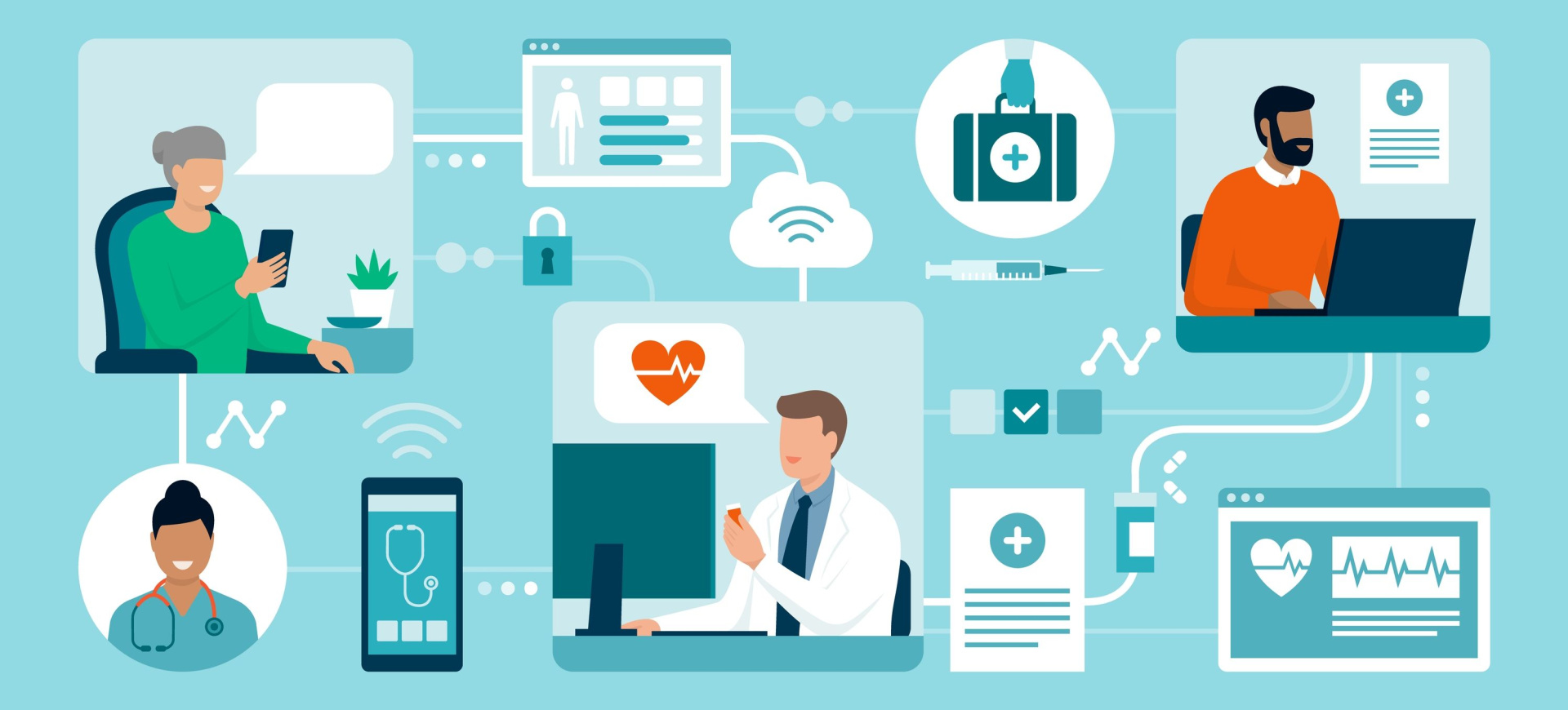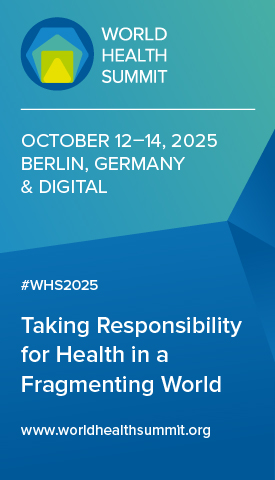Seamless, simple and speedy
Early digital efforts have been piecemeal, fragmented and siloed, but if harnessed correctly, digital technology and data can accelerate a new era of improved health care for everyone
In the quest to achieve Health For All, health systems aim to deliver everything needed to prevent and treat ill health, affordably and for everyone.
But it has become harder to deliver on these aspirations. First, we know more about the factors that influence health and well-being: the determinants of health are not only biological, behavioural and social, but also digital and commercial. Furthermore, awareness about the environmental determinants of health keeps growing (and changing) as we learn more about the health effects of heavy metals, microplastics, per- and polyfluoroalkyl substances, and other types of pollution, and as the world’s climate changes. The World Bank estimates the total cost of lead exposure at 6.9% of global gross domestic product (due to IQ losses and increased cardiovascular disease), higher than the combined cost of ambient and household air pollution with disproportionate effects in low- and middle-income countries. Over 60% of infectious diseases will likely be exacerbated by climatic hazards. The intractable inequities in health are exacerbated by these determinants, which are more prevalent among vulnerable populations and for which services to address them are less accessible – creating a vicious circle where these determinants perniciously grow.
Second, Covid-19 has affected national economies. Its wide-ranging impacts have impeded governments’ ability – especially in low-income countries and countries in fragile and conflict situations that need to invest the most in strengthening their health systems – to return to pre-Covid levels of health spending. The efficient use of every cent spent on health is a great priority, especially as governments must – simultaneously – make up lost ground and strengthen health systems to be more resilient to future health emergencies.
Third, the health workforce is struggling. Health workers have suffered immeasurably during the Covid-19 pandemic, resulting in burnout, mental health concerns and high attrition. This has exacerbated staff shortages that were already of concern: the World Health Organization estimates that in just six years, there will be a shortage of 10 million health workers, mainly in low- and middle-income countries.
Fourth, emerging evidence shows the extent to which human systems are linked and integrated. Research has exploded on the human microbiome and its effects on immune function, neurotransmitter production, neurodegenerative diseases, cardiometabolic diseases, vitamin absorption, arthritis, colorectal cancer, glucose metabolism, frailty, osteoporosis, functional gut disorders and more. Advanced big data analytics enable much of these findings. Yet inequity exists here too: this research has been done mainly in the United States and Europe, with minimal done in Africa. There is a need for more local government leadership and research financing, and more focus on diseases of highest public health importance in Africa.
The need for personalisation
Other areas have also emerged where more integrated thinking and interventions are needed – such as new evidence for reducing tuberculosis incidence and mortality. Tuberculosis has resurfaced as the largest cause of disease burden worldwide. A recent study in India showed that providing a basic food rations package and multivitamins to tuberculosis patients and their immediate families reduced mortality by a whopping 60% and also infections to family members by almost 50%. Populations need different services from in the past, and each person may not respond the same to the exact same intervention, suggesting that personalisation is needed.
Fifth, artificial intelligence holds the promise to accelerate health and drug discoveries, provide personalised disease treatments, deliver new types of diagnostics and health services, make health system administration and financing easier, ease the administrative burden of health workers, and provide new ways to access accurate health information that will help people make decisions for better health.
Health systems face the impossible task of metamorphosising faster, with fewer staff and less resources, at a time of accelerated and expanded scientific discovery and declining trust. Health systems need to quickly assimilate the accelerated pace with which new evidence is generated and, simultaneously, deliver new, more, better, seamless services that reach everyone.
Digital technology and data hold the key to fast-tracking simple and seamless solutions that deliver value exponentially. Digital can help countries address universal health coverage gaps, manage health systems better and deliver care that accommodates the new evidence. Well-chosen, widely available, affordable digital technology with connected, well-governed health data systems – integrated into health systems – can support countries’ delivery of the right services to more people with less financial stress. Connected electronic health records and virtual interactions such as telemedicine can bring up to 15% in efficiency gains and free resources for addressing patients’ other needs.
Early digital efforts have been piecemeal, fragmented and siloed. The World Bank’s recently published Digital-in-Health: Unlocking the Value for Everyone suggests that countries need a new mindset about digital health investments. Digital-in-health can make health personal, contain costs, reduce health differences, help accelerate public health actions and improve conditions for health workers. As in banking and communications, it can also improve efficiency and reduce inequity, provided it is intentionally designed.
To move to the next level of impact, countries need to do three strategic things:
1. Prioritise the digital solutions that respond to people’s health needs, are evidence based and are equitable.
2. Connect to deliver new, more, better, seamless health services through leadership and partnership, data governance, and to fill digital infrastructure and health information gaps.
3. Scale to ensure equitable access to all, improve digital skills and literacy, create synergy with wider digital transformation efforts, nimble partnerships, and support with financing, monitoring and implementation.
There are pragmatic, low-cost aspects of digitalisation to focus on, no matter the maturity of a country’s systems, digital infrastructure or financing situation. Setting up health data governance, regulations and standards for interoperability of digital solutions are not costly but will reduce siloed digital solutions and help manage fragmentation. All countries should pursue them.
Over the past decade, the World Bank has invested almost $4 billion in digital health, including in health information systems, digital governance, identification systems and infrastructure. There is significant and growing demand from countries in their journey to bring digital and data into health systems in ways that protect, expand and innovate, acknowledging that each dollar allocated to fortify health systems is also an investment in digitalisation and data utilisation to enhance the effectiveness of health systems for the benefit of all.
Digital works. Covid-19 has shown that countries with higher levels of digital adoption prior to the pandemic had fewer Covid-related deaths and cases per million population. The choices that governments make to invest in digitalisation and data today will move us to Health For All for generations to come, regardless of the health emergencies to come.












